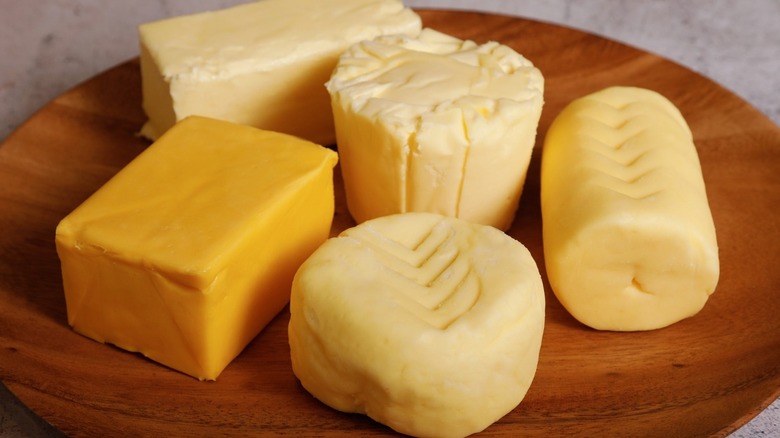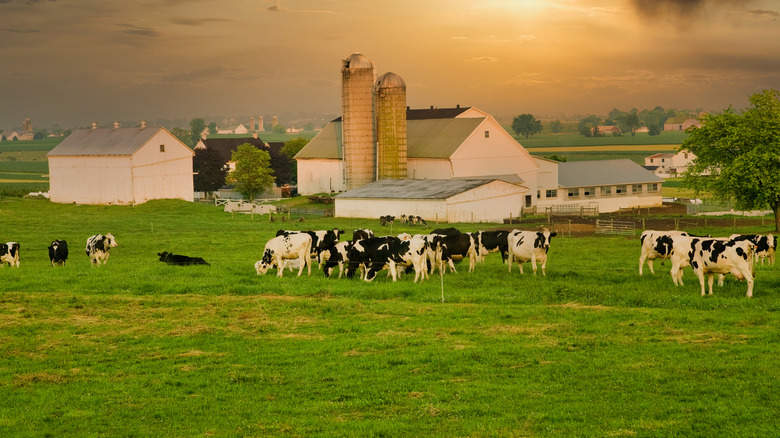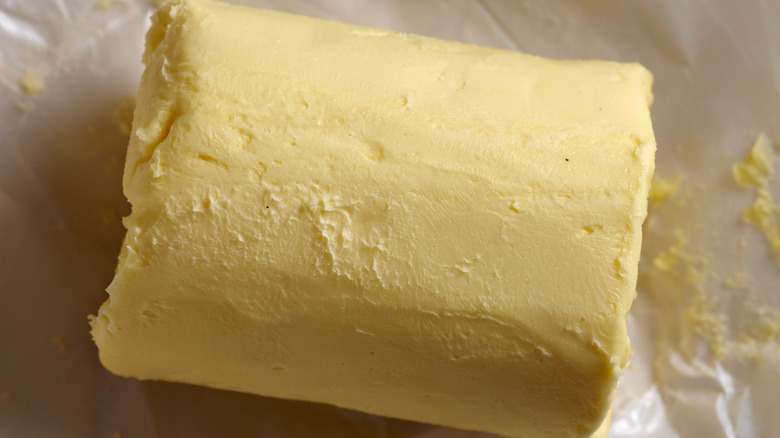What Makes Amish Butter Unique
Amish communities in the U.S. are known for selling high-quality, handmade items — from wooden furniture to quilts, toys, and food. One unique offering from the Amish is butter, which stands out compared to other readily available types.
The term itself inspires a bit of confusion, explains Taste of Home, starting with the outdated assumption that all Amish butter is hand-churned by family farmers in pioneer-style clothing with no modern machinery involved. Rather than buying directly from farmers, you will often find Amish butter in specialty or farmer's markets within Amish communities or nearby cities, as noted in the market guide from Amish America. The product can also now be purchased in large grocery store chains like Publix or even online.
So what makes Amish butter so different from European or American butter? The answer is multi-layered, ranging from texture and flavor to how and where it's made.
Flavor and texture make Amish butter stand out
When choosing between various types of butter available today, shoppers are likely to prioritize taste and texture above all else, and that's where Amish butter really shines. Taste of Home says the main reason for this is its higher butterfat content when compared to other styles. Typically Amish butter is made with at least 84% butterfat, placing it above American-style butter at 80% and European- and Irish-style butters at 82%. Though it may not seem like much, this slightly higher percentage gives Amish butter an ultra-creamy, rich texture which fans say makes all the difference.
Though most side-by-side butter comparisons end with the acknowledgment that Amish butter is much creamier, Real Simple makes even further distinctions based on taste. They found the flavor of Amish butter to have a distinct touch of tanginess, as well as a milky quality that makes it stand out from other butter types.
Amish butter is usually easy to spot
Presentation and packaging also distinguish traditional Amish butter from prevalent supermarket brands that come in stick form. Amish butter typically — though not always — is sold rolled into one or two-pound logs and wrapped in parchment (via Real Simple). If you're unsure if you're looking at Amish butter, it will usually also have "Amish butter" written on the label to avoid any possible confusion, be it because the particular company decided to sell its Amish butter in a stick form or it is a different type of butter also sold in a log.
The production process differentiates Amish butter as well. Many modern-day producers utilize electric churners cranking out countless pounds of butter annually. Minerva Dairy, for example, creates Amish butter to the same standards as handmade versions while producing an average of 20,000 slow-churned pounds in a day. Real Simple explains that other producers of Amish butter employ similar methodologies such as using milk from pasture-raised cows and hiring Amish employees to ensure their product is the quality shoppers have come to expect.


